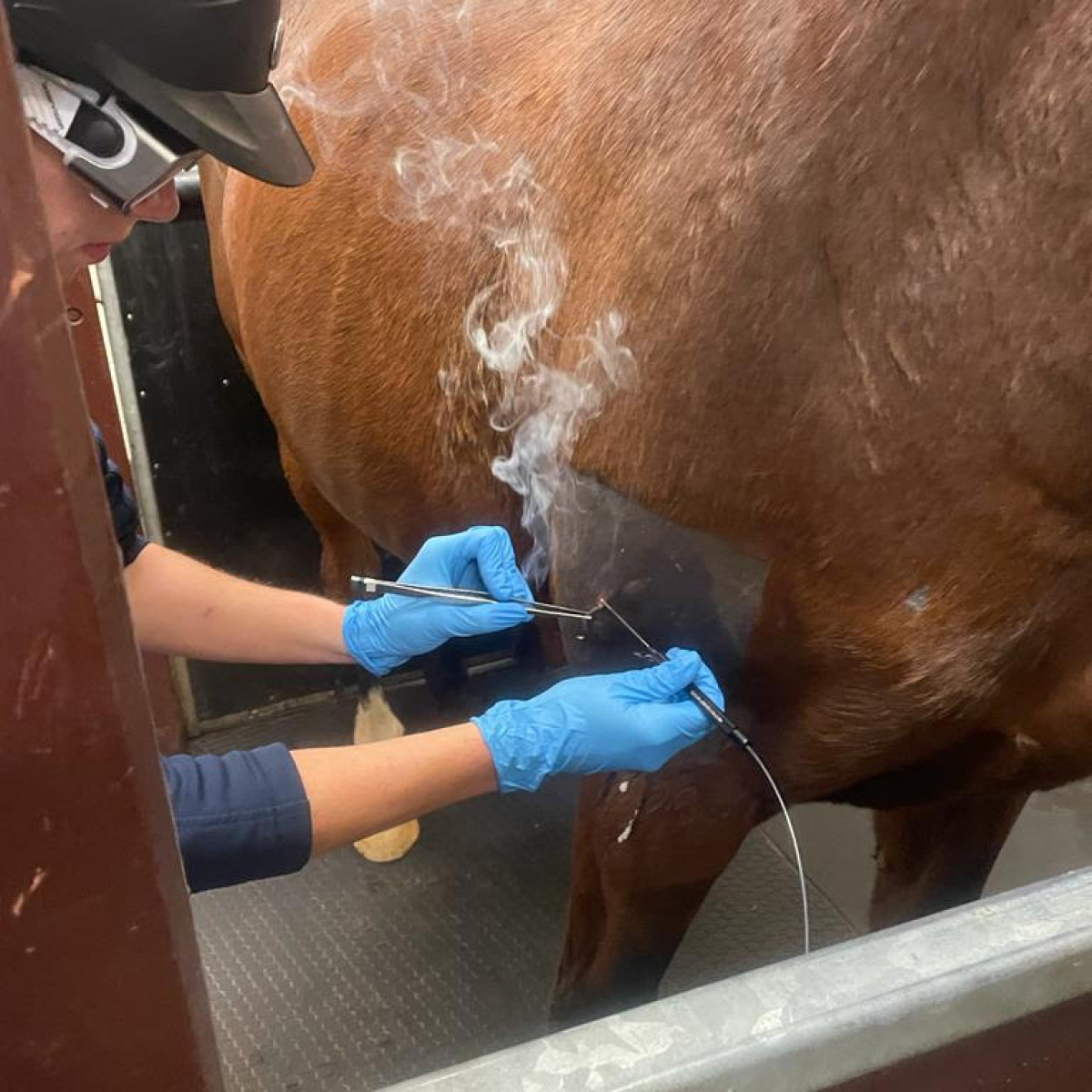Just How Laser Therapy in Horse Treatment Is Transforming Veterinary Take Care Of Horses
Laser treatment has emerged as a transformative method in equine veterinary care, offering a non-invasive option that expedites recovery and improves total health. The portability and versatility of laser therapy tools additionally emphasize their growing indispensability among vets.
Recognizing Laser Treatment

The technology behind laser treatment is based in the concept of photochemistry, where photons are taken in by chromophores within cells, leading to boosted ATP production and modulation of responsive oxygen varieties (Equine Therapy). This, consequently, advertises cellular expansion, reduces inflammation, and accelerates recovery. Vet experts utilize various kinds of lasers, including low-level lasers (LLLT) and high-power Course IV lasers, depending on the particular healing objectives and the nature of the equine problem being treated
Various laser wavelengths and power settings are very carefully picked to target various tissue depths and achieve wanted professional results. Safety methods are critical, as incorrect usage can result in thermal damage or suboptimal restorative effects. Hence, a comprehensive understanding of laser treatment's mechanisms and applications is critical for its reliable implementation in equine vet technique.
Benefits for Horse Health
The myriad benefits of laser treatment for equine wellness encompass boosted healing, pain reduction, and boosted wheelchair. This innovative therapy technique leverages specific wavelengths of light to pass through tissues, promoting cellular function and promoting quick tissue repair work. The non-invasive nature of laser treatment makes sure minimal stress and pain for the horse, promoting a smoother recuperation process.
Boosted healing is one of the foremost advantages, as laser therapy speeds up mobile regrowth and collagen synthesis. This causes faster recuperation times from injuries and surgeries. Pain decrease is achieved through the anti-inflammatory results of laser therapy, which lowers swelling and decreases the manufacturing of pain-inducing chemicals. Because of this, horses experience substantial remedy for persistent and sharp pain problems.
By minimizing inflammation and pain, and boosting cells repair, laser therapy aids in recovering joint function and muscle mass versatility. Thus, laser treatment stands as a transformative tool in modern horse vet treatment.
Typical Conditions Dealt With
Laser therapy has actually become a flexible treatment option for a variety of typical equine problems. Amongst these, musculoskeletal injuries are especially amenable to laser treatment. Equine Therapy. Soft tissue injuries, such as tendonitis and tendon strains, benefit from the anti-inflammatory and analgesic effects of laser therapies, which increase healing and minimize discomfort. In addition, laser therapy works for conditions like osteo arthritis, where it helps reduce joint inflammation and advertise cells fixing.
Wound monitoring is one more area where laser therapy has shown significant guarantee. Persistent wounds or slow-healing abscess can be specifically challenging in equines, yet laser treatment enhances cellular regrowth and enhances blood flow, thus speeding up the recovery procedure. Moreover, laser therapies have been effectively employed in taking care of hoof conditions such as laminitis and abscesses, relieving discomfort and promoting faster recuperation.

Technology Behind Laser Treatment
Past the myriad problems treatable with laser treatment, the modern technology itself benefits more detailed assessment. At the heart of laser treatment is using specific wavelengths of light see this page to permeate cells and elicit biological responses. These wavelengths, commonly ranging from 600 to 1000 nanometers, are precisely absorbed by chromophores in the skin, muscle, and other tissues, initiating a cascade of cellular occasions.
Laser gadgets used in veterinary medication usually use low-level laser therapy (LLLT) or cool laser treatment. Unlike high-powered surgical lasers, these tools operate at lower power levels, maximizing restorative advantages while decreasing thermal damage. The power from the laser find out here now light boosts adenosine triphosphate (ATP) production, enhances mobile metabolism, and increases tissue fixing processes.

Success Stories and Study

Showcasing the tangible benefits of laser therapy, countless success tales and instance studies illuminate its transformative influence on equine wellness. One such situation includes a pureblood racehorse struggling with persistent tendonitis. Conventional therapies produced very little renovation, however after integrating laser therapy right into the routine, the steed displayed significant reductions in swelling and discomfort within weeks, ultimately going back to competitive racing.
An additional engaging instance includes a dressage steed diagnosed with severe pain in the back, limiting its performance. A vet team employed low-level laser therapy (LLLT) to target the swollen locations, leading to significant renovation in flexibility and a noteworthy reduction in pain. Over several sessions, the horse reclaimed its peak kind, showcasing the efficiency of laser therapy in dealing with bone and joint problems.
Additionally, a research carried out at a leading equine clinic analyzed 50 horses with numerous soft cells injuries treated with laser therapy. The outcomes were striking: 85% of the steeds showed accelerated recovery you could try this out times and enhanced flexibility. These situations underscore the adaptability and effectiveness of laser treatment in equine medication, providing a non-invasive, scientifically-backed approach to boosting recovery and performance in horses.
Verdict
Laser therapy is changing equine vet care by providing a non-invasive therapy that speeds up healing, lowers inflammation, and alleviates discomfort. With its effectiveness in treating a variety of problems, from bone and joint injuries to chronic conditions like osteo arthritis, this innovation significantly improves equine wellness and mobility. The mobility and flexibility of laser therapy even more emphasize its transformative impact on veterinary methods, strengthening its function as an important tool in modern-day equine medical care.